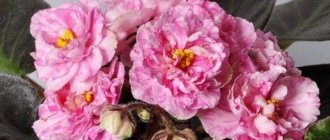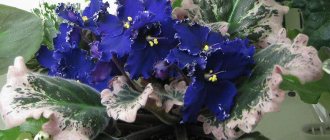Many of us are familiar with beautiful thin branches with bright orange lantern cups, which are used to decorate the interior. They are popularly called Chinese lanterns. This is a physalis plant. Red glossy berries are hidden under the beautiful caps. Branches with miniature fruits are also often used for decorative purposes. It turns out that there are also edible species of this plant that are very beneficial for health.
What does it look like
Physalis is a perennial plant belonging to the Solanaceae family (which also includes tomatoes, potatoes, and eggplants). Moreover, this is the largest genus of all members of the family. The plant is low - 60-100 cm, with a grassy stem that becomes woody at the root. The roots of the perennial branch well, and bushes quickly grow in place of the shoots. The leaves are wide, with pointed ends, teeth along the edges. During flowering, the buds produce bell-shaped, cream- or vanilla-colored cinquefoils. When flowering ends, a small ball-shaped fruit is formed from the ovary. It is covered on all sides with leaves that fold into a neat little case. The property of hiding the fruit in a calyx is a distinctive feature of physalis.
The sepals grow faster than the internal contents. When the fruit is fully ripe, the shell changes color and becomes dry. Initially, the calyx has a light green color, then it changes to yellow-orange, scarlet, purple, depending on the variety. The color of the fruit is approximately in the same color range.
Outwardly, they look like cherries or cherry tomatoes. Their weight depends on the variety and ranges from 2-10 grams. The fruits of vegetable varieties that are grown for harvest are much larger - they can weigh up to 90 g. According to the botanical classification, the fruit of physalis is a berry, but in common parlance it is often called a vegetable.
Description
Physalis vulgaris A perennial herbaceous plant of the Solanaceae family, 30-60 to 120 cm high.
The stem is straight or creeping, branched.
The lower leaves are alternate, the upper leaves are opposite, ovoid, sometimes pubescent, located on petioles.
Blooms in May - June. The flowers are solitary, located in the axils of the upper leaves. The flowers are greenish-yellow in color.
The fruit is up to 5 cm in diameter, an orange-red spherical berry, covered with a calyx that has grown again in the form of a bubble and is colored fiery red. The fruit contains many seeds. Ripens in August - September. The surface of the fruit is sticky.
Spreading
Physalis vulgaris grows in the European part of Russia, the Far East, the North Caucasus, Transcaucasia and Central Asia. It is found in light forests, among shady bushes, near populated areas, as well as along the roadsides, fields and vineyards. In the southern regions of our country it forms continuous thickets. It has been cultivated in Europe for more than two centuries. Physalis is especially widespread in France, where it is used as a raw material for confectionery products. It grows wild in Mexico and Guatemala. In our country it grows as a weed in the south of Ukraine and the Black Sea coast of the Caucasus. In the Stavropol region, Mexican physalis grows in forests.
Varieties
There are decorative and edible plant species. The former are used to decorate the landscape and arrange bouquets, the latter - in cooking and folk medicine. In total, 120 varieties of physalis are known. They differ in fruit size, taste, and cup color. The most popular decorative species is common physalis. Botanical name: Physalis alkekengi. It is also called Physalis Franchet. René Franchet is a botanist from France who discovered and studied this plant in the late 19th century. A characteristic feature of decorative species is beautifully located cups of regular shape with a diameter of 60-70 mm. The berries of these varieties are not eaten, as they are poisonous.
Food species of the plant are divided into berry and vegetable according to the size of the fruit and taste properties. Vegetables have a bitter skin; it is removed when cooking. Berry fruits have a sweet taste; preserves and jams are made from them. The Mexican variety is a vegetable variety. It tastes like regular tomatoes. The fruits are large, yellow, light green, purple. Popular berry varieties:
- Strawberry
- Pineapple
- Confectionery
- Plum
- Korolek
They can be eaten fresh without heat treatment. Edible varieties have more faded colors than decorative ones. The taste of the berries is mainly sweet, with sourness. Some types have a spicy taste.
Growing and caring for plants
Decorative physalis is the most unpretentious type of plant. It tolerates even severe frost and thrives both in the sun and in a shaded area. But when planted in a well-lit place, you can get especially large and bright plant specimens.
- Physalis seeds are sown in the depths of winter in small containers, like tomatoes, providing them with light and fertilizing.
- Prevention of the appearance of fungus in the soil is carried out by dusting it with ash and sand.
- Physalis seedlings are planted in open ground towards the end of spring.
- These plants do not like areas where nightshade crops grew before them. They are very favorable to soils that previously contained legumes, cabbage, potatoes, and cucumbers.
- Although physalis grows almost everywhere, its harvest is especially good on pre-fertilized soil. To choose the right type and dose of fertilizing, we recommend that you read the article on fertilizers: effects on plants, soil, humans. However, “acidic” soil needs liming before planting this crop in it.
- In addition, physalis must be watered frequently, while avoiding stagnation of water in the ground. Only at the end of summer, due to the ripening of the bolls, should watering the crop be reduced.
- It is better to tie up tall bushes in order to preserve the beauty and slenderness of the stem, which is necessary when creating various bouquets from them.
- To speed up the ripening of the decorative parts of plants at the end of summer, their tops should be plucked off.
Benefit
Physalis fruits have high nutritional value. They contain a lot of vitamin C, K, PP, B1, B6. They contain minerals: magnesium, phosphorus, iron. In addition, they have:
- sucrose
- pectins
- carotenoids
- quercetin
- lycopene
- tannins
- organic acids (malic, citric, caffeic, tartaric)
Thanks to the vitamin complex contained in physalis, eating berries has a general strengthening effect on the body and increases resistance to viruses. Dietary fiber contained in the pulp helps the digestion process, increases intestinal motility, and removes harmful substances. The fruits of the plant have the following properties:
- anti-inflammatory
- choleretic
- diuretic
- painkiller
- bactericidal
The berries contain antioxidants that prevent healthy cells from degenerating into atypical ones, thereby preventing the development of cancer. Vitamins B and C have a positive effect on the functioning of the central nervous system and strengthen the cellular structure. Nicotinic acid prevents the formation of cholesterol plaques inside blood vessels. Potassium regulates blood pressure and accelerates metabolic processes in cells. The juice secreted by the fruit helps heal wounds on the skin. With the help of decoctions and tinctures of edible types of berries, diseases such as:
- bronchitis, colds, flu;
- cystitis, prostate;
- dermatophytosis, skin mycosis;
- kidney stone disease;
- hypertension.
The benefits and harms of consuming physalis
Physalis is rich in vitamins and various microelements. The properties of physalis and its effect on the human body are multifaceted.
- By saturating the body with useful substances, it is able to remove harmful components from it. For example, thanks to the potassium contained in fruits, the body is cleansed of excess sodium, which leads to edema.
- Physalis is widely known as a medicinal plant that promotes the flow of bile and has diuretic, hemostatic, and analgesic properties. It is also used in the treatment of colds and coughs.
- Physalis berries are an invaluable remedy used for many diseases of the gastrointestinal tract, cardiovascular problems, and women's diseases; they help get rid of stones and prevent their formation.
- However, with increased acidity of gastric juice, berries should be consumed with caution. The fruit shells and leaves of the plant are poisonous; they can only be used as an external remedy, applied to wounds and bruises.
- Berries can in some cases cause allergies. They should not be used by pregnant and breastfeeding women. Due to its strong diuretic properties, this medication should be taken under the supervision of a specialist.
Physalis is a valuable dietary, medicinal and ornamental crop. It is difficult to list all its beneficial properties. No wonder it was so popular among the ancient peoples of the Mayans, Aztecs and Incas. It is easy to grow in the garden. It is easy to care for. This wonderful plant brings joy and will decorate the house with its exquisite and bright boxes, reminiscent of warm and sunny summer days.
Traditional medicine recipes
To treat various pathologies, the following types of drinks are used: tea, decoction, alcohol tinctures, freshly squeezed juice.
Berry decoction
25 g of dried physalis fruits are poured with boiling water in a volume of 400 ml, the dishes are placed on low heat. Without bringing to a boil, keep covered for 15 minutes. Then remove from the stove, cool and filter. The decoction is taken in a third of a glass 2-3 times a day for diseases of the respiratory tract, kidneys, and stomach pain.
Ointment
To heal cuts, relieve inflammation on the skin, and eliminate joint pain, this composition is made. The berries are finely chopped or crushed in a blender. Add olive oil in a 1:1 ratio and mix well. The mixture is infused in a dark place for three weeks, then the mass is squeezed out and the cake is removed. The ointment is applied to the affected areas 2-3 times a day until the symptoms disappear.
As it is
Physalis fruits are used both as berries and vegetables. Vegetable varieties are canned, fried, stewed, and added to first courses. Berry varieties contain pectin, which has gelling properties. Therefore, they are often used to make jams. They are also used to make:
- jam
- jelly
- marshmallow
- marmalade
- candies
- jelly
You can eat both varieties fresh. Vegetable types of fruits are dried, salted for the winter, pickled, and caviar is prepared from them. The berries are dried, ground with sugar, made into puddings and purees.
Decorative compositions (photo)
Bright decorative lanterns should be dried first. It's not difficult at all.
And then you can create a wide variety of compositions from them:
- Bouquets of physalis look great in an openwork wooden vase. Next to it you can place a pumpkin of a similar color, “revitalizing” it with glued eyes, a smiling mouth, etc.
- The bouquet can also be placed in a watering can of a similar color without water.
- Bright lanterns can be poured into a large round and transparent container.
- By hanging several branches upside down on the wall and throwing a hat of a similar color on top of them, you can get a picture with a peculiar long red braid.
- This decoration is very suitable for creating a variety of wreaths, both round and rectangular. You can even use different frames for this. The resulting compositions look good on the wall and door.
- On New Year's Day, bright wreaths made of physalis are very appropriate in combination with candles of the same color, placed in low containers. You can also illuminate them with light bulbs.
- Physalis branches look harmonious in combination with pine needles, rowan bunches, and ears of corn. You can add various beads and multi-colored braided wire circles to them. All this goes well with curtains of autumn colors, draperies and other various decorative elements.
- Physalis can also be used to create topiary.
Recipes
Before pickling, the fruits are washed under running water, damaged and wrinkled ones are selected. To make caviar and jam, you can use slightly overripe fruits.
Pickled Physalis
Before marinating, you need to prepare a sterilized glass container. Place on the bottom of the jars: two garlic cloves, a few black peppercorns, a bay leaf, a sprig of any garden herb, half a red chili pepper. Then the container is filled with physalis berries, placed tightly to each other. All ingredients are poured with boiling water. After 15 minutes, pour the water from the jars into a saucepan, add one teaspoon of salt and sugar to each jar. After the composition begins to boil, it is again poured into jars. Immediately close with airtight lids.
Sauce
This spicy sweet and sour gravy serves as an accompaniment to steaks. You will need: a cup of pineapple physalis, two sweet crumbly apples, juice of half a lemon, 30 ml of liquid honey, salt, pepper, several cilantro seeds. Apples need to be peeled, seeds removed, and finely chopped. Add crushed berries to them and simmer in mustard oil until brown. Then add seasonings and simmer for another 5-10 minutes under the lid. Then reduce the heat to minimum, add honey, pour in lemon juice, and simmer for 2-3 minutes.
Candied fruit
To prepare the dish, take strawberry varieties. For two kilograms of fruit, syrup is prepared from 2.5 kg of granulated sugar and 600 ml of water. Bring the mixture to a boil, pour in the berries. It is cooked for 10 minutes over low heat. After this, the mass rests for 5 hours. Then the procedure is repeated. After re-cooking, transfer the berries to a colander and allow the liquid to drain. The syrup can be used to make compote. The fruits are sprinkled with powdered sugar and dried in the oven at a temperature of 30-40 degrees for 2-3 hours.
Caviar
For one kilogram of physalis vegetable varieties, take 600 g of carrots, 300 g of onions. The root vegetables are grated, transferred to a deep frying pan, and fried in olive or camelina oil for 4-5 minutes. Physalis is blanched and the skin is removed. Then they are finely chopped or blended and added to vegetables. All ingredients are simmered together until soft. Towards the end of cooking, add salt, sugar and seasonings to taste.
Cocktail “Fruit Explosion”
You will need the following ingredients: strawberry physalis, mango, passion fruit, ice cream, fruit liqueur, ice. Fruits need to be peeled, seeds removed, and cut into pieces. Beat the slices in a blender along with the ice cream. The mixture is poured into a glass, a spoonful of liqueur is added, and stirred. Ice is placed on top and garnished with physalis berries.
Growing
The climatic conditions of the Stavropol region make it possible to grow two types of physalis: Mexican, with larger fruits (also called vegetable), and strawberry, with a high sugar content. The requirements for heat and moisture are not high.
Agricultural technology
The agricultural technology of physalis is basically the same as for cultivating tomatoes. It can be successfully grown both by seedlings and without seedlings in all zones of the region, on various soils, except highly saline and excessively wet ones.
Seeds for seedlings are sown at the end of March in boxes with fresh fertile soil. Before this, they are pickled in a 1% solution of potassium permanganate and germinated until biting. The placement of seeds into the soil is very small, only 0.5 cm.
Shoots appear in 8-9 days. In the phase of the first true leaf, the plants are planted in pots or boxes with distances in the rows and between them of 8-10 cm. The seedlings are placed in a lighted place, the soil is kept in a loose and slightly moist state. From mid-April, seedlings are accustomed to the outside temperature, and in the third decade they are planted in open ground according to the following scheme: Mexican physalis in a row of 50-60 cm, strawberry physalis - 30-40 cm, with row spacing of 60 cm.
In a seedless crop, the seeds, after dressing and germination, are sown in open ground in mid-April, after frost has passed. The growing technology is the same as for tomatoes. In cold rainy weather, when plants may become infected with late blight, treatment with Bordeaux mixture is necessary. Ripe fruits are not affected by this disease.
Mexican physalis ripens by mid-July, strawberry - in August. At 0°C, physalis continues to bear fruit, so the fruits are harvested before frost. Ripe fruits fall off and do not spoil on the ground for 10-15 days. In a dry room, ripened fruits can be stored at a temperature of 1-4°C until spring, ripe ones - 2-3 months. To do this, they need to be scattered in a thin layer in dry boxes. Frozen fruits are used for processing.
Product yield varies from species to species. Mexican physalis is more productive - up to 2.0-2.5 kg/m2, strawberry - up to 0.5-1.0 kg/m2. To obtain seeds, select the largest ripe fruits.
Reproduction
Propagated by seeds. To obtain seeds, physalis fruits are harvested in full biological ripeness. The selected seeds are washed, dried, and sorted.
Varieties
Common physalis has varieties: Mexican, strawberry, medicinal, etc.
In culture there are physalises, divided by place of origin into South American and Mexican.
In terms of biological properties, Mexican physalis is close to tomatoes. A characteristic feature of the flower is the presence of a swollen calyx (“lantern”), which envelops the fruit like a cap. The sheaths covering the fruit often tear and peel off, which is why this type of physalis is called flaky.
The bush reaches 60-80 cm in height, spreading. The fruit is a fleshy berry of green, yellow-green or purple color, similar in structure to a tomato but smeared with a sticky substance. Compared to tomatoes, it is more cold-resistant, drought-resistant, and less light-loving. Varieties: Moscow early, Gruntovy, Gribovsky - early ripening with large (up to 60-80 g) fruits of sweet or sour-sweet taste; confectionery - Fruitful, with shelf-stable, smaller fruits.
Can be grown in all soils, except very acidic ones. The best is heavy, fertile; on light and lean lands, the yield sharply decreases, although the plant enters the fruiting season earlier in this case and accumulates more sugars.
Good predecessors are vegetable crops grown using fresh manure (cucumbers, cabbage, etc.); peppers, eggplants, potatoes and tomatoes are undesirable - they are affected by the same diseases that can be transmitted through the soil. Sow before winter or early spring, in well-cultivated soil fertilized with humus (but not manure). Sowing method - row, row spacing - 70 cm; seeding rate - 0.3-0.4 g/m. Sealing - 3-4 cm. You can compact the sowing of physalis with lettuce, onions, radishes, which are removed by the time the plants close.
Seeds begin to germinate at 12-13°. Plants can withstand short-term frosts down to 2°. The optimal temperature for growth and development is 18-25°. Care: loosening the soil, weeding, watering, 1-2 feedings with slurry (1:5), mullein (1:10). With the appearance of 2 true leaves, the seedlings are thinned out at a distance of 10-12 cm; in phase 3-4 - by 22-25 cm.
South American forms - strawberry and Peruvian physalis - are more thermophilic than the Mexican one.
Strawberry physalis is sometimes called raisin physalis. A plant with a creeping, densely pubescent stem 50-70 cm long. Due to the strong pubescence of all parts of the plant, it is also called pubescent. The leaves are oval, slightly corrugated, dark green with yellowish tint. The upper part of the flower is a pale green calyx. The fruit is a small, fleshy berry (5-10 g), yellow or bright orange in color, round, sweet with a pleasant strawberry smell. People call it earth cranberry and raisin berry. The cap grows faster than the fruit. The most common varieties are Strawberry and Izyumny. Demanding on warmth; seeds germinate at temperatures not lower than 15°.
Peruvian physalis is cultivated as a berry crop in its homeland (Peru). Appeared in Russia at the beginning of the 19th century. The plant is late-ripening, very demanding of heat, moisture, and soil fertility. Seeds germinate at a temperature of 20°. The leaves are large, the berries are small, enclosed in an overgrown nut-colored sheath, sweet and sour with a pineapple, sometimes with a slight orange smell.
There are no breeding varieties. Local forms are cultivated. Due to the long growing season, they are propagated by seedlings. The fruits of the Mexican physalis reach technical ripeness after 80-90 days from germination, strawberry - 80-100, Peruvian - 100-130. Fruits are collected regularly (ripe ones fall off). It is not recommended to collect physalis in wet weather or in the morning. It is harvested carefully - mature, healthy and unbruised fruits can be kept for up to 2 months. Unripe fruits of Mexican physalis can be stored fresh all winter at a temperature of 1-4°.
Collected physalises are immediately cleared of their caps, because they contain a bitter substance - a glycoside that can pass into the fruit pulp. Before frost, the bushes are pulled out and placed in piles, where the young fruits are ripened. The productivity of Mexican physalis is 2-3 kg/m2, strawberry physalis is 1-1.5.
Interesting Facts
In some countries, physalis is a symbol of love and desired pregnancy. In Europe, there is a beautiful custom of giving physalis. It is customary to present a bouquet of Chinese lanterns to a girl with whom a man wants to have a child. Branches with orange buds are also given to pregnant women - cups with berries hidden inside symbolize the fetus in the mother's womb. The wife's relatives can present such a bouquet to the future father as a sign of gratitude for the successful conception.
There is a Chinese legend about the origin of the physalis plant. In ancient times, an evil dragon swallowed the sun. Darkness reigned on Earth, people could not find each other, animals began to die. There was a brave soul who decided to return the sun to all living things. He took a lantern and went in search of the dragon. The young man wandered for a long time, and, finding an evil monster, killed him. The sun soared up, and the hero, blinded by its rays, dropped the lantern to the ground. As it fell, it turned into thousands of small lanterns that rolled across the ground and hung on the blades of grass.
There is a sign that a bouquet of physalis placed in the house drives away evil spirits and attracts prosperity and comfort. This beautiful plant fills you with positivity just by looking at its cheerful orange lanterns.
Lantana
This is an amazing plant, the spherical inflorescences of which contain all shades of orange. The stem is erect, with oval, bright green foliage. It reaches a height of 50 cm. The flowering period of lantana is quite long, from May to November.
The plant is unpretentious, but for its active growth the following conditions are necessary:
- frequent watering;
- dry air;
- temperature regime - from 17 to 28 ° C;
- location - south, east or west.
Peculiarities! In order for lantana to bloom profusely and for a long time, it needs good lighting - up to 5 hours of bright sunlight or additional lighting.











